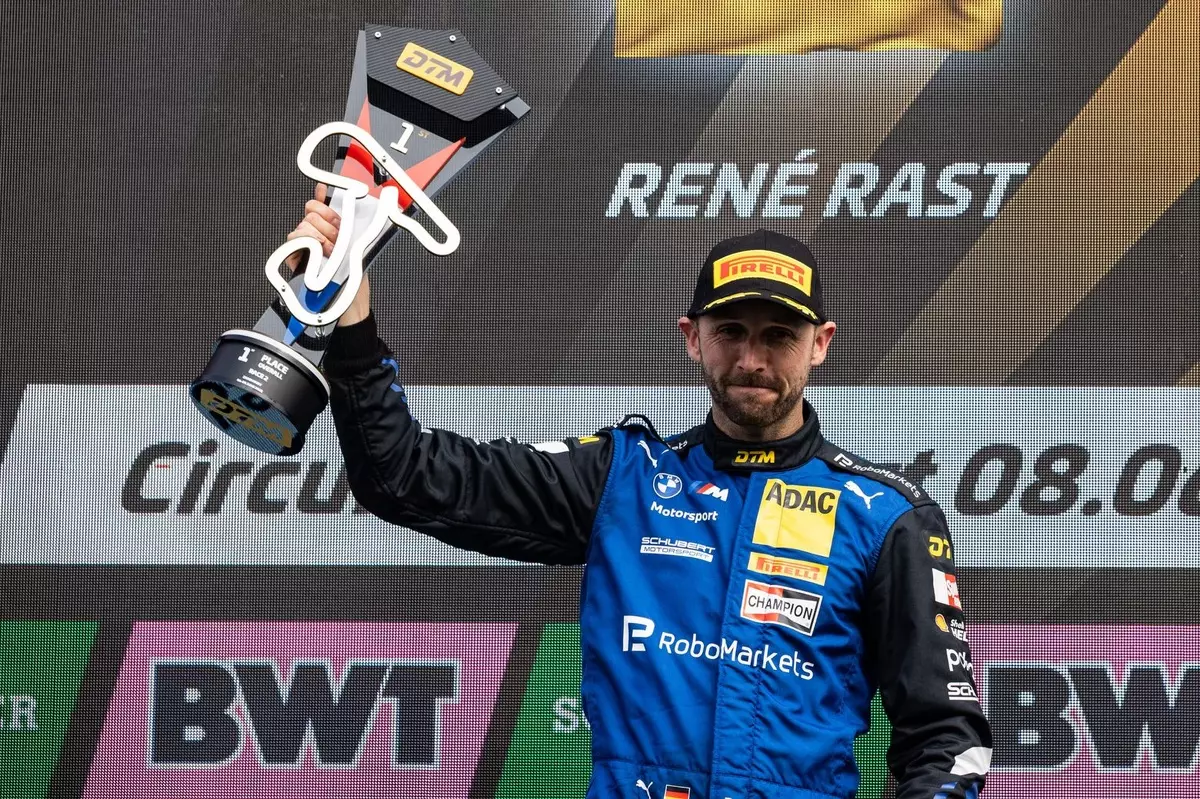The DTM racing world is often marked by unexpected twists, but few events were as startling as what transpired just before the start of the second race at Zandvoort. Rene Rast, a seasoned driver with three DTM championships under his belt, experienced a frightening pre-race incident that could have derailed his efforts for a fourth victory. As he prepared for what many expected to be a straightforward race amid the picturesque dunes of Zandvoort, he struck his head on a pitwall railing—a seemingly innocuous accident that quickly escalated into a significant physical challenge.
Rast’s confirmation of his pain moments after the race paints a picture not merely of a driver pushing through a physical discomfort but of someone valiantly battling against real adversities. “Yes, I have a headache,” he shared candidly, but it was clear that the issue was far more complicated than the casual acknowledgment of an ordinary headache. The gravity of his condition intensified during the podium ceremony, revealing deeper complications that could have jeopardized not only his race performance but also his overall health.
The Race Against Pain
What unfolded during the race was not just a showcase of Rast’s driving skills, but a masterclass in mental fortitude. He mentioned he had to “concentrate and keep [his] thoughts together,” a testament to the mental strain athletes endure despite physical pain. This mental resilience is a characteristic that separates elite athletes from their competitors. In Rast’s case, his determination to push through the discomfort while still racing at high speeds speaks volumes about his character and drive.
As the race progressed, the physical toll began to manifest more severely. Reports of dizziness, discomfort, and tingling sensations in his fingers beg the question: how far can one push their body before it becomes too much? Racing at such high speeds demands peak physical condition and the ability to react in split seconds. To perform under such distress required an immense amount of concentration, and it speaks to Rast’s exceptional skill as both a driver and a competitor.
Unseen Struggles
The fact that Rast’s teammates and even his own team principal were unaware of his plight adds another layer to this saga. Marco Wittmann and Torsten Schubert both expressed surprise upon learning of Rast’s condition post-race, indicating the sort of mental game that accompanies racing. Drivers frequently mask their struggles from each other, engaging in a dance where the perception of invincibility reigns supreme. This culture of strength often leads to unhealthy norms regarding physical and mental health in sports, where vulnerability can be perceived as weakness.
However, it is essential to acknowledge this reality without demonizing it. In many ways, Rast’s experience serves as a pivotal reminder of the sacrifices made by athletes in pursuit of greatness. The unyielding pressure to perform at the highest level can lead to silence around injury and pain, as competitors fear it could impact team dynamics or sponsorship prospects. Rast’s story reveals how critical it is for racing cultures to start taking these health concerns more seriously.
A Lesson in Precaution
Medical professionals acted swiftly in the aftermath of Rast’s incident, emphasizing a crucial ethos in sports: the importance of prioritizing health over competition. The precautionary measures taken by the medical team reflect a growing awareness around athlete health in high-risk sports. Rast’s transfer for further examinations post-race, while perhaps disruptive, underscores the importance of safeguarding well-being, even at the cost of immediate competitive success.
In an era where athletes increasingly speak out about mental and physical health, Rast serves as a potent example of the challenges faced by high-performing individuals. The message he shared through his social media about recovery and readiness for his next race is significant—it sends a signal to both fans and fellow competitors that being proactive about one’s health is paramount, even when faced with immediate pressure to perform.
Rene Rast’s ability to overcome such obstacles and still seize victory in what could have been an apocalyptic scenario is remarkable. It showcases not just his talent but also his incredible mental strength amid tangible adversity. The racing community can only hope this incident serves as a catalyst for more open dialogue regarding health and well-being in high-pressure environments.

